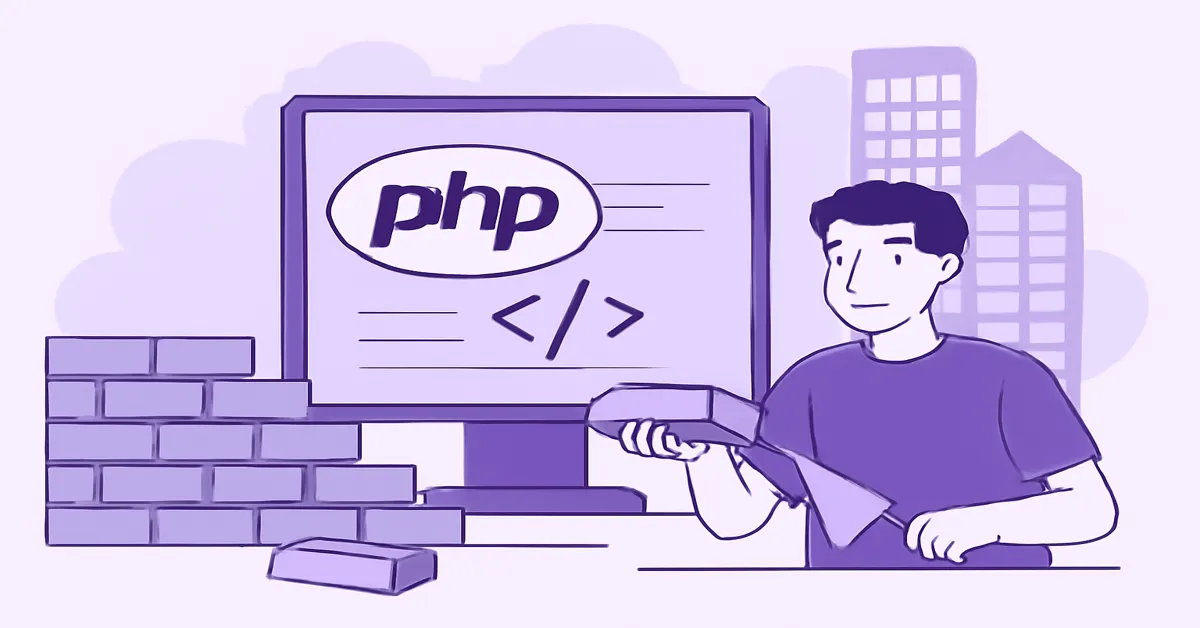As the world of web development continues to evolve, the demand for high-quality applications and efficient programming has never been higher. For developers, PHP remains one of the most widely used server-side scripting languages, known for its flexibility, scalability, and ease of integration with various technologies. But how do you, as a developer, ensure that your PHP program is not just functional but also optimized for the future? In this article, we’ll explore strategies and best practices for building the best PHP programs for tomorrow’s digital landscape.
Introduction: Why PHP Still Matters
PHP has been a cornerstone of web development for decades, powering platforms like WordPress, Facebook, and Wikipedia. Despite the rise of JavaScript frameworks and the increasing popularity of Node.js, PHP continues to dominate the web development world. This is because of its ability to handle large-scale applications, ease of use, vast support community, and seamless integration with databases like MySQL and PostgreSQL – PHP Program.
However, the world of programming is constantly shifting. To ensure that your PHP program stands the test of time, it’s essential to adopt modern coding practices and methodologies that not only ensure the program is efficient today but also future-proof for the ever-evolving tech environment.
1. Adopting Modern PHP Practices: Moving Beyond Legacy Code
One of the first steps in creating a best-in-class PHP program for the future is adopting modern PHP coding practices. PHP has evolved significantly over the years. With the release of PHP 7 and the upcoming PHP 8, the language has undergone a complete transformation in terms of performance, security, and features.
Here’s how you can future-proof your PHP codebase:
- Use Latest PHP Versions: Always ensure that your program is built using the latest stable version of PHP. PHP 7.x brought substantial improvements in speed and memory usage, while PHP 8 introduces Just-In-Time (JIT) compilation, further enhancing performance.
- Enable Type Declarations: Modern PHP encourages the use of type declarations for function arguments and return values. This improves code readability, reduces errors, and allows for better type safety. Functions like
int,float, andstringshould be explicitly declared.
phpCopyfunction addNumbers(int $a, int $b): int {
return $a + $b;
}
- Embrace Object-Oriented Programming (OOP): PHP’s object-oriented capabilities are essential for creating scalable and maintainable programs. Classes, objects, and interfaces help structure code, making it easier to manage and extend in the future.
- Autoloading and Composer: Use Composer, PHP’s dependency manager, to handle third-party libraries and autoloading. Composer automates package management, ensuring that you can easily include updated versions of libraries and avoid compatibility issues.
- Error Handling with Exceptions: Avoid using traditional error handling functions and opt for exceptions instead. PHP’s exception handling mechanism ensures that errors are managed in a structured and predictable way, which is essential for large-scale applications.
2. Emphasizing Security: Building Bulletproof PHP Applications
Security remains one of the most critical aspects of any web application. As PHP is widely used for server-side programming, its security vulnerabilities have often been exploited. As a developer, you need to build secure PHP programs that protect both users and data.
Here are key practices to secure your PHP applications:
- Sanitize User Input: Always sanitize and validate user inputs to prevent SQL injection, cross-site scripting (XSS), and cross-site request forgery (CSRF). Use prepared statements with PDO (PHP Data Objects) or MySQLi to prevent SQL injection attacks.
phpCopy$stmt = $pdo->prepare('SELECT * FROM users WHERE email = :email');
$stmt->execute(['email' => $_POST['email']]);
- Hash Passwords: Storing plain-text passwords is a security risk. Use PHP’s built-in
password_hash()function to create secure hashes andpassword_verify()to check the validity of the passwords.
phpCopy$passwordHash = password_hash($userPassword, PASSWORD_DEFAULT);
- Use HTTPS: Ensure that your application is served over HTTPS to prevent man-in-the-middle attacks. HTTPS encrypts data between the client and the server, making it more difficult for attackers to intercept or tamper with sensitive information.
- Stay Updated with Security Patches: PHP, like any other software, receives regular security updates. Ensure that you update your PHP version and any third-party libraries to mitigate any known vulnerabilities.
3. Creating Scalable PHP Applications: Optimizing for Growth
A critical aspect of building PHP programs for the future is scalability. As user bases grow, your program must be able to handle increased traffic and load without compromising performance.
- Leverage Caching: Implement caching mechanisms to reduce the load on your server and improve response times. PHP supports multiple caching methods such as file caching, database caching, and opcode caching (via OPcache).
- Optimize Database Queries: Database performance often becomes a bottleneck in large-scale applications. Always optimize your SQL queries and consider using techniques like indexing and query caching to speed up data retrieval. Avoid making redundant queries to the database.
- Use a Framework: Modern PHP frameworks like Laravel, Symfony, and CodeIgniter provide powerful tools for building scalable applications. These frameworks come with built-in support for routing, security, and database abstraction, reducing the amount of boilerplate code you need to write.
- Asynchronous Processing with Queues: For applications with high-volume tasks, consider using queues to offload processing tasks. You can use libraries like Laravel Queue or PHP’s
Gearmanextension to handle background jobs and reduce the load on your main web server.
4. Focusing on User Experience: Designing with the Future in Mind
A best-in-class PHP program is not just about functionality but also about providing a seamless user experience. As a developer, it’s crucial to consider how your program will be interacted with by users, both now and in the future.
- Responsive Design: With the rise of mobile browsing, ensuring your application is mobile-friendly is a must. Use responsive web design techniques, and implement frameworks like Bootstrap or Foundation to ensure your website adapts well to different screen sizes.
- User Interface (UI) and User Experience (UX) Design: Focus on creating intuitive and engaging UI/UX designs. This will help your program stand out and ensure that users can easily navigate and use your application.
- Progressive Web Apps (PWA): With the increasing use of mobile devices, Progressive Web Apps (PWAs) are becoming the future of web applications. PWAs combine the best features of both web and mobile apps, offering offline capabilities and fast load times. Consider integrating PWA features into your PHP applications for an enhanced user experience.
5. Future Trends in PHP Programming: Keeping Up with the Changing Landscape
As technology evolves, so must your approach to PHP programming. Staying updated with new trends and emerging technologies will help ensure that your program remains relevant in the future.
- PHP and Artificial Intelligence: AI and machine learning are beginning to play a significant role in web development. By leveraging PHP’s support for integrating with AI tools, you can build more intelligent applications, such as chatbots and recommendation engines.
- Microservices Architecture: Moving away from monolithic applications, microservices allow developers to break down large applications into smaller, manageable services. PHP can be an excellent choice for microservices architecture, especially when paired with RESTful APIs and containerization tools like Docker.
- Serverless Architecture: Serverless computing is on the rise. Services like AWS Lambda allow developers to run PHP code without provisioning or managing servers. By adopting serverless architecture, you can reduce infrastructure costs and scale your application more effectively.
Conclusion: Building PHP Programs for a Bright Future
Creating the best PHP program for the future requires a combination of solid foundational practices, forward-thinking strategies, and a deep understanding of modern technologies. By following the principles outlined in this article, you can ensure that your PHP applications are secure, scalable, and optimized for the demands of tomorrow’s users.
From embracing modern coding standards and leveraging security practices to optimizing your database queries and adopting cutting-edge trends like AI and serverless architecture, you have the tools to build PHP programs that stand the test of time. The future of PHP development is bright, and by staying ahead of the curve, you’ll be well-prepared to meet the challenges and opportunities that lie ahead.
Read:
30 Interview Questions for PHP Programming: Your Guide to Acing PHP Interviews
Step 1 to Learn PHP Programming: A Comprehensive Guide for Beginners
Step 2 to Learn PHP Programming: Your Way to Mastery
The Uses of PHP Programming: A Deep Dive into Its Versatility and Impact on Web Development
FAQs
1. What is PHP and why is it still relevant for web development?
PHP (Hypertext Preprocessor) is a server-side scripting language that is widely used for creating dynamic web pages. Despite the rise of other technologies like JavaScript and Node.js, PHP remains relevant because it is easy to integrate with databases, widely supported, and scalable for building complex web applications. Popular platforms like WordPress, Facebook, and Wikipedia still rely on PHP, showcasing its power and longevity in the web development world.
2. How do I ensure my PHP code is secure?
To ensure your PHP code is secure, follow best practices such as:
- Sanitizing user inputs to prevent SQL injection and XSS attacks.
- Hashing passwords using functions like
password_hash()andpassword_verify(). - Using prepared statements with PDO or MySQLi to prevent SQL injection.
- Ensuring your application uses HTTPS to encrypt data transfer.
- Keeping your PHP version and dependencies up-to-date to protect against known vulnerabilities.
3. What are the benefits of using object-oriented programming (OOP) in PHP?
Object-oriented programming (OOP) in PHP allows developers to structure code in a modular and reusable way. Benefits include:
- Improved maintainability: OOP makes it easier to update and debug code by breaking it into manageable pieces.
- Better organization: Using classes and objects helps organize your code logically.
- Reusability: You can create reusable code through inheritance and interfaces.
- Scalability: OOP facilitates building large, complex applications by creating clear relationships between data and logic.
4. What is the role of Composer in PHP development?
Composer is a dependency manager for PHP that automates the installation, updating, and autoloading of libraries. It helps developers manage third-party packages, ensuring compatibility between libraries and avoiding version conflicts. Composer also makes it easier to share your PHP projects with others and automate repetitive tasks like code autoloading.
5. How can PHP handle large-scale web applications?
PHP can handle large-scale web applications through:
- Database optimization: Efficient SQL queries, indexing, and caching can reduce database load.
- Caching mechanisms: Tools like OPcache, Redis, or Memcached help reduce server load and speed up response times.
- Frameworks: Using frameworks like Laravel or Symfony can help structure code better, improving performance and maintainability.
- Asynchronous processing: PHP can handle background tasks using queues, reducing the workload on the main application server.











